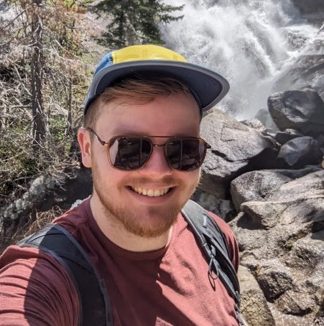
“I was as surprised as anyone when I made it through, but I think my proposal’s uniqueness and research-informed approach made it stand out. Sometimes being an outsider is an advantage.”
–Aidan Mickleburgh, U-M College of Engineering master’s student and one of five finalists for the OpenAir Collective Carbon Removal Challenge
In his short career, Aidan has founded a start-up company and an incubator support program, completed a Fellowship at Lawrence Livermore National Labs, and worked as both a software and instrumentation engineer. He holds a B.S. (Computer Engineering), MBA (Entrepreneurship), and certificate (Technology, Licensing and Entrepreneurship) from Syracuse University.
We caught up with Aidan to learn more about his work.

How did you become interested in carbon removal and climate innovation?
I suppose you could say it was a product of necessity and curiosity. My journey started during the COVID-era internship scramble in my junior year as a computer engineering student. With limited opportunities, I joined an invention accelerator at Syracuse University, where my team created a smart asthma pump for children using digital sensors — a novel idea at the time.
While we secured second place, regulatory hurdles led us to pause further development. This experience, though, sparked my fascination for building solutions that make a difference.
Encouraged by friends, I dove into Syracuse’s entrepreneurial ecosystem, first in software and then in hardware after working in tech transfer for government agencies like the Department of Energy and National Aeronautics and Space Administration.
That’s when I began forming my thesis: for real impact in carbon removal, the technology must be economically sustainable and market-driven, rather than dependent on regulations or subsidies. That idea put me on a path to explore deeper solutions in the decarbonizing industry and, ultimately, led me to the University of Michigan (U-M) to refine my skills as a technical leader in what I see as the “new carbon economy.”

You competed in the Open Air Collective Carbon Removal Challenge as a one-person team. You did very well even though you were up against larger multi person teams. How did that experience come about?

I felt out of place seeing teams with up to ten people representing major universities, while I was solo. I had only just started my program at U-M a couple of months before the competition deadline.
The idea itself actually began as a scribble on a Chili’s napkin in December after an animated conversation with a friend. It centered on a core problem: the ocean naturally absorbs CO₂ because it’s more alkaline than the atmosphere, but as oceans acidify, this process slows.
Continue reading about Aidan
